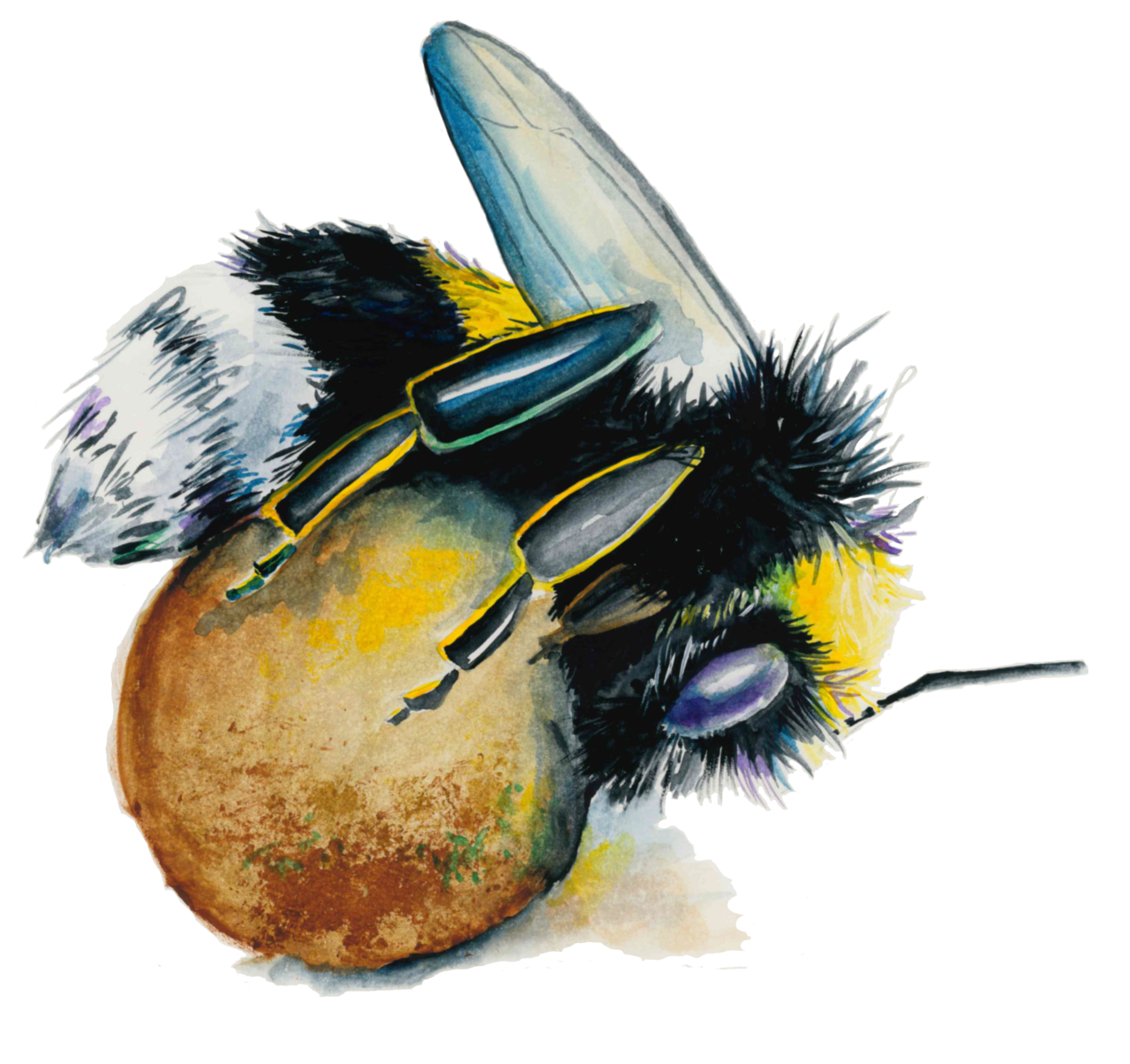The resourceful buff-tailed bumblebee
Everyone loves bumblebees. They are nice to look at, make a cute buzzing sound and almost never sting. But there is more to bumblebees than that.

Bombus terrestris, the buff-tailed bumblebee, is a common sight in European landscapes. The abdomen tip is buff-colored only in queens, while it is white in males and workers. Image: Adobe Stock
Profile
- Bombus terrestris, the buff-tailed bumblebee, belongs to the family of Apidae.
- It is widely distributed in Europe.
- It is used in greenhouse pollination, and it has established itself in many areas where it is not native, such as Japan, Chile, Argentina and Tasmania.
- Its common name refers to the queen whose tail is buff-colored (brownish yellow). The abdomen tips of workers and males are white.
- Buff-tailed bumblebees are, like most bumblebees, social animals. Their colonies consist of an egg-laying queen and a caste of workers which are sterile, limited to gathering food and caring for young.
- Unlike honeybee colonies, bumblebee colonies usually last for just one season – or sometimes less.
Classification
- Kingdom
- Animalia
- Phylum
- Arthropoda
- Class
- Insecta
- Order
- Hymenoptera
- Family
- Apidae
- Genus
- Bombus
- Species
- B. terrestris
Important pollinator
Bumblebees pollinate a range of wild and crop plant species such as wildflowers, tomatoes, peppers, peas, apples, blueberries, melons and strawberries.
Challenges
Like other insects, bumblebees face great challenges. Many bumblebees have a long flight season (February/March – October/November), high energy demands, and a lifecycle with large variations in worker numbers through the year. This makes them particularly sensitive to seasonal fluctuations in floral resources that are becoming more frequent due to climate change. Also, they rely entirely on pollen and nectar resources within one kilometer of their nest. They are, therefore, strongly affected by changes in the local landscape.
Bumblebees in Switzerland
Bumblebees are declining across the world, posing a global conservation concern. Currently, there are approximately 250 bumblebee species worldwide. Switzerland has approximately 40 bumblebee species, four species have gone extinct: B. confusus, B. distinguendus, B. magnus, and B. pomorum.
Did you know?
A bumblebee is piercing a leaf. Image: © Harriet Lambert
When there is no food around, bumblebees aren’t entirely helpless. Our research group has discovered that, when there is a shortage of pollen, bumblebees take action: they pinch the leaves of plants that have not yet flowered. This damage stimulates the plants to produce flowers that bloom up to 30 days earlier than plants that have not been pinched. You can access the publication from here.

A bumblebee is damaging a plant. Image: © Hannier Pulido
Did you know?
Not all flowers are generous with their pollen. Bumblebees use a special technique to reach particularly well-hidden pollen. Find out more in our article "Buzz-pollination – Or why we need bumblebees in greenhouses."
Why is there no bumblebee honey in the shops?
Bumblebees do produce honey to feed their larvae. Unlike honeybees, however, they do not keep excess resources in their nest, but food is converted immediately into growing the colony. They also do not need to build up stores for the winter, since only the queen survives the winter. The rest of the colony perishes at the end of summer.
References
Pashalidou FG et al. 2020. Bumble bees damage plant leaves and accelerate flower production when pollen is scarce. Science. 368 (6493): 881-884.





